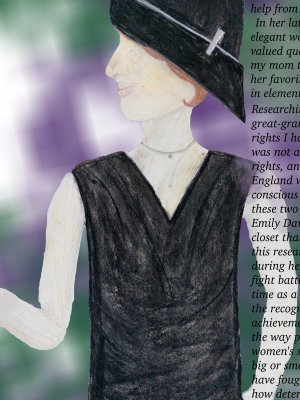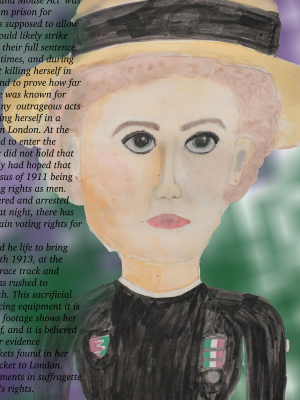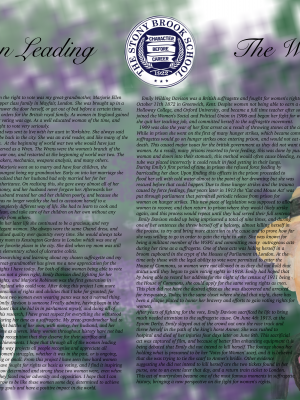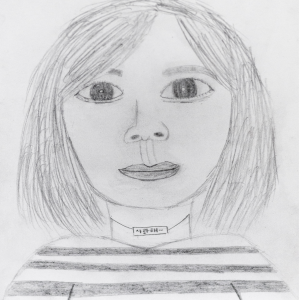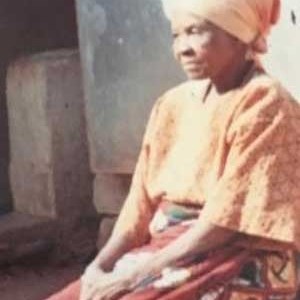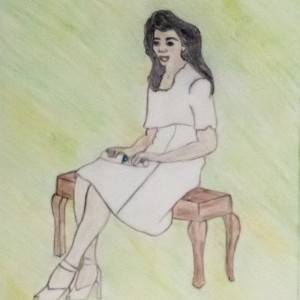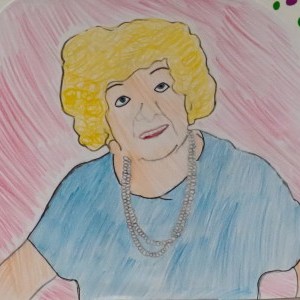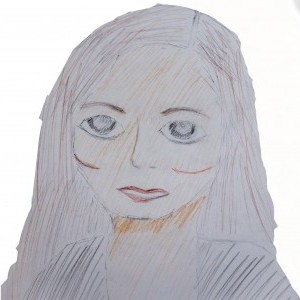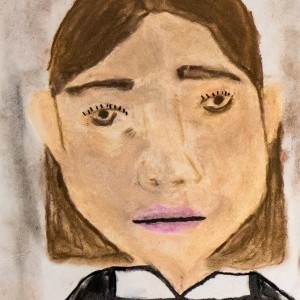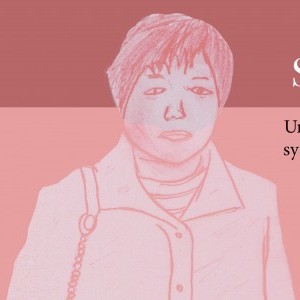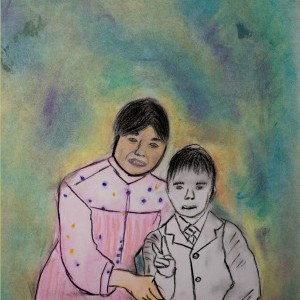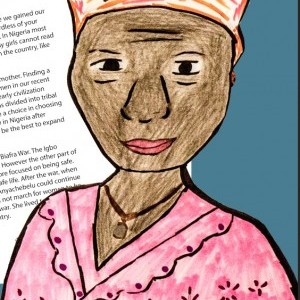Gemma O'Neill
The Stony Brook School | Stony Brook, NY | 9-12th Grade
Inspirational Family Member
My Great-Grandmother
The first member of my family who was given the right to vote was my great-grandmother, Marjorie Ellen Robinson. Marjorie was born in 1908 to an upper class family in Mayfair, London. She was brought up in a house with servants, never being allowed to answer the door herself, or get out of bed before a certain time. Her father was a coach maker, and even filled orders for the British royal family. As women in England gained voting rights in 1918, the only obstacle to her voting was her age. She was a well-educated woman of the time, and according to my grandmother, she took the right to vote very seriously.
During WWI, she was very young and was sent to live with her aunt in Yorkshire. She always said she hated living there and always wanted to be back in the city. She was an avid reader, and like many of the women in my family loved Jane Austen novels. At the beginning of WWII, she would have just turned 31 years-old, and during the war she served as a Wren. The Wrens were the women’s branch of the British navy, which was formed during WWI and restarted at the beginning of WWII. The Wrens varied in their duties, some as code breakers, mechanics, weapons analysis, and many others.
Marjorie went on to marry and have four children, the youngest being my grandmother. Early on into her marriage, she realized that her husband had only married her for her inheritance. On realizing this, she gave away almost all of her money, and her husband never forgave her. Afterwards, her husband treated her and her children poorly, and because she was no longer wealthy, she had to accustom herself to a completely different way of life. She had to learn to cook and clean, and take care of her children on her own without any help from others.
In her later life, she continued to be a gracious and very elegant woman. She always wore the same Chanel dress, and valued quality over quantity every time. She would always take my mom to Kensington Gardens in London, which was one of her favorite places in the city. She died of ulcerative colitis when my mom was still in elementary school.
Historical Figure I Admire
Emily Wilding Davison
Emily Wilding Davison was a British suffragette and fought for women’s rights until her death in 1913. She was born on October 11th 1872 in Greenwich, Kent. Despite women not being able to earn a degree, Emily attended both Royal Holloway College and Oxford University, and became a full-time teacher after some time spent as a governess. She then joined the Women’s Social and Political Union in 1906 and began her fight for women’s rights. Three years later in 1909, she quit her teaching job and committed herself to the suffragette movement.
1909 was also the year of her first arrest as a result of throwing stones at the chancellor David Lloyd George’s carriage. While in prison, she went on the first of many hunger strikes, which became common among imprisoned suffragists. Most suffragettes would go on hunger strikes once entering prison and would not eat, or sometimes drink, until they were close to death. This caused major issues for the British government as they did not want to be responsible for the deaths of these women. As a result, many prisons resorted to force-feeding; this was done by pushing a tube up through a nostril of the woman and down into her stomach. This method would often cause bleeding, swelling, and damage to the nose, and if the tube was placed incorrectly, it could result in food getting in their lungs. During Emily’s first period of time in prison, she refused force-feeding by barricading her door. Upon finding this, the officers in the prison proceeded to flood her cell with cold water, almost to the point of her drowning, but she was rescued before that could happen. Due to these hunger strikes and the trauma caused by force-feedings, four years later in 1913 the “Cat and Mouse Act” was put through parliament that permitted periodic release from prison for women on hunger strikes. This new piece of legislation was supposed to allow women to recover, and then return to prison where they would likely strike again, and this process would repeat until they had served their full sentence.
Emily Davison ended up being imprisoned a total of nine times, and during one of her sentences she threw herself off a balcony, almost killing herself in the process, to try to bring more attention to the cause and to prove how far she was willing to go in order to gain the right to vote. She was known for being a militant member of the WSPU and committing many outrageous acts during her time as a suffragette. One of these acts was hiding herself in a broom cupboard in the crypt of the Houses of Parliament in London. At the time only those with the legal ability to vote were permitted to enter the House of Commons, so women were not allowed in as they did not hold that status until they began to gain voting rights in 1918. Emily had hoped that by being able to record her address for the night of the census of 1911 as the House of Commons, she could apply for the same voting rights as men. This plan did not have the desired effect as she was discovered and arrested for trespassing. Today, in the same closet where she hid that night, there is a plaque to honor her bravery and efforts to gain voting rights for women.
After years of fighting for the vote, Emily Davison sacrificed her life to bring much needed attention to the suffragette cause. On June 4th 1913, at the Epsom Derby, Emily slipped out of the crowd onto the race track and threw herself in the path of the king’s horse, Anmer. She was rushed to hospital and died of her injuries four days later on June 8th. This sacrificial act was captured on film, and because of better film enhancing equipment, it is being debated that Emily did not intend to kill herself. The footage shows her holding what is presumed to be her ‘Votes for Women’ scarf, and it is believed that she was trying to tie the scarf to Anmer’s bridle. Other evidence suggesting she did not intend to kill herself are the two tickets found in her purse, one to an event later that day, and a return train ticket to London. This act of martyrdom became one of the most famous moments in suffragette history, bringing a new perspective on the fight for women’s rights.
What the Project Means to Me
Researching and learning about my chosen suffragette and my great-grandmother has given me a new appreciation for the rights I have today. For both of these women, being able to vote was not a given right; Emily Davison died fighting for her rights and Marjorie Robinson was the first generation in England who could vote. After doing this project, I am more conscious of rights and abilities that I take for granted; for these two women even wearing pants was not a normal thing. Emily Davison is someone I really admire, having stood myself in the closet that she hid in in parliament, and doing all of this research, I have great respect for everything she withstood during her time as a suffragette. My great-grandmother had to fight battles of her own, with money, her husband, and her time as a wren. Many women throughout history have not had the recognition that they deserve for their sacrifice and achievements. I hope that through all of the women leading the way projects all people recognize and appreciate all women’s struggles, whether it was in the past, or is ongoing, big or small. From this project, I have seen how hard women have fought for rights as basic as voting, and I find it inspiring how determined and strong these two women were, even when they faced major adversity and opposition. I hope that I can grow to be like these women some day, determined to achieve my goals and have a positive impact in the world.
Explore the Archive
More From This Class
Click on the thumbnails below to view each student's work.Deadline Extended
There's still time to join Women Leading the Way.
Become a part of our storytelling archive. Enroll your class today.
Join the Project

